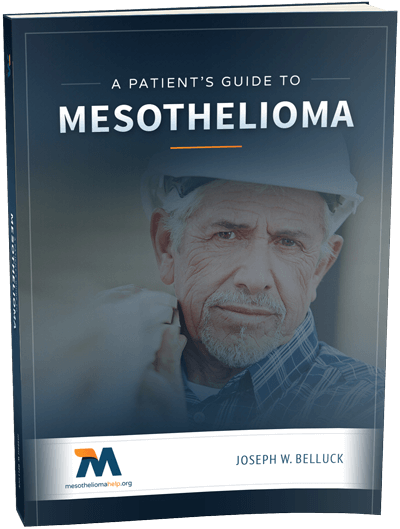Mesothelioma Help Cancer News

Finding Cause of Cancer Metastasis May Lead to New Treatments
MesotheliomaHelp has reported on a variety of studies recently where researchers have delved into the reason for metastasis in cancer. Many of the findings focused on cancer pathways. Now, in a new study, researchers report a pair of molecules may be the reason cancers grow unchecked. For aggressive cancers like mesothelioma that elude treatments, this finding could lead to a new treatment that ends cancer growth.
Researchers from Queen Mary University of London’s Barts Cancer Institute of England, led by Dr Stéphanie Kermorgant, report that they focused their research on understanding how cancer cells can continue to thrive after they break away from the primary tumor – when they are most vulnerable. They knew that integrins, or proteins on the cell surface, use ‘outside-in’ and ‘inside-out’ signaling to anchor cancer cells in place. But, using lung and breast cancer cell cultures from zebrafish and mice, they discovered that once the cancer cells began their metastasis process and were floating the integrins started using ‘inside-in’ signaling, or signaling from within the cell.
“Metastasis is currently incurable and remains one of the key targets of cancer research,” said Dr. Kermorgant. “Our research advances the knowledge of how two key molecules communicate and work together to help cancer cells survive during metastasis.”
They found that the beta-1 and c-Met proteins pair up, and migrate into the floating cancer cell to an area that is typically reserved for signaling cell death. Instead, in the case of floating cancer cells, the proteins’ “inside-in” signaling actually guides the rest of the cells to resist death.
Pleural mesothelioma, a cancer of the lining of the lungs caused by past asbestos exposure, is one cancer that is highly aggressive and spreads quickly to other sites. Survival is typically one year after diagnosis. Research shows that metastasis is the cause of nearly 90 percent of cancer deaths, making it critically important that researchers fully understand how to stop metastasis to increase survival in mesothelioma patients.
The QMUL researchers report that current research for integrins focuses on trying to prevent the anchor from failing, or keeping the cells attached in place and not migrating. However, they plan to prevent the integrin from getting inside the cells in the first place, thus, leading “to the design of better therapies against metastasis and more effective treatment combinations that could prevent and slow both tumour growth and spread.”
“We hope that our support of this exciting research will one day lead to better treatments that can prevent the spread of cancer,” said Dr. Susie Gray, Research and Communications Officer at Rosetree Trust, one of the organizations that provided funding for the research.
2,500 to 3,000 people are diagnosed with mesothelioma each year in the U.S. Mesothelioma takes decades to appear after exposure, but then advances rapidly.
The results of the study can be found in the June 23 issue of Nature Communications.
Photo Credit: Barts Cancer Institute, QMUL
Who is the Patient?
With such a devastating disease as mesothelioma you would think it would be easy to pick out who is the patient. Not necessarily. At a recent mesothelioma conference I attended there was an empty seat at a table with two couples who were already seated. I joined them, and as our conversation progressed it became apparent that both couples had one partner who had mesothelioma and the other who was the very supportive spouse. I had to ask both couples who was the patient.
The first couple were in there 70’s, friendly, and both appeared very fit. The man was the patient. He had recently undergone a pleurectomy and suffered some complications, but he was now doing well. His life is full of activities and he said he tires more easily than before surgery. His wife spoke of how she encourages him to rest every day, but some days he won’t give in. The man said he is cautious about how much weight he will lift. He tries not to lift anything larger than 10 pounds.
The second couple at the table were in their early 60’s. The woman was the mesothelioma patient. She had been diagnosed over two years ago, had never had surgery, and she had been treated with chemotherapy. She reported that she had never experienced shortness of breath, and overall she felt very well. Her biggest complaint was fatigue. It was not constant but on occasion she felt wiped out. Her appetite was good, and she looked wonderful. In a strange way she was grateful for the diagnosis. Mesothelioma had given her and her husband time to do what they wanted now- not in the future. They had done some traveling, visited their children, and made it a point to enjoy life to the fullest now.
Mesothelioma is a rare disease. It is also a disease that affects everybody differently. Every mesothelioma tumor is different, as is every patient and family that it affects. Knowing these facts, and seeing it play out with two couples at a mesothelioma conference, was very inspiring to me.
Watching these two couples, who did not know each other before the conference, sharing stories and supporting each other, is what being part of a sharing, supportive community is all about.

Mesothelioma Caregivers Offer Physical and Emotional Help
Looking back on the time that I spent as a part-time caregiver for my father as he battled pleural mesothelioma, I realize that there were two very different, yet interconnected, parts of the job. Taking care of Dad required concrete, physical help as well as emotional support.
Some of the tasks that were involved in aiding my Dad changed throughout his fight. Before his diagnosis, he couldn’t really do much without being short of breath. At that point, he needed help with chores around the house, things that he would usually have done without batting an eye. After his diagnosis and surgery, he required help cleaning his incision site, navigating movement with his chest tubes, and regaining his strength.
Once Dad was recovered and completed his four rounds of chemotherapy, he felt great! He was cutting grass, playing with his bluegrass band, and taking walks much like he did before he fell ill. One thing that he did lose throughout this process was some muscle. A lot of the time he would get frustrated; he just couldn’t seem to do the things he could before we were presented with the term “mesothelioma.”
These were the times where the second part of caregiving kicked in. It was so vitally important for us to support Dad on a deeper level. He had to know that we were there for him to lean on when he was having a tough day accepting what had happened to him. He would often tell me that he was frustrated. Having been a man who could seemingly do anything and then all at once be changed, had to have been a hard thing to endure.
Loving Dad through his mesothelioma was the easy part; to know him was to love him. I know that he always felt that love; the love of family and friends, and the love of God. That is what carried him through.
Please remember that when you are caring for someone afflicted with this cancer, they are still the same person. Don’t allow them to be defined by a disease. Help them with their bodily needs, but don’t forget those emotional ones as well.
Know more about Mesothelioma and how you can deal with it.

Recurrence of Cancer is Mentally Challenging
The possibility of the recurrence of cancer is something that everyone diagnosed with cancer lives with every day. Recurrence of mesothelioma is often difficult to avoid. According to the American Cancer Society, “cancer recurrence is defined as the return of cancer after treatment, and after a period of time during which cancer cannot be detected. The same cancer may come back in the same place it first started or somewhere else in the body.” There are three different types of recurrence, local, regional and distal.
There is a difference between recurrence and progression. When cancer spreads or gets worse it is classified as progression of disease. When dealing with mesothelioma from a psychological viewpoint, recurrence or progression can be just semantics.
When mesothelioma recurs it takes a toll on everyone – patient, family and caregivers. There are treatment options for recurrence which can include surgery, clinical trials, radiation, or chemotherapy, all designed to help the mesothelioma patient‘s quality, and length of life.
Once a specific therapy is once again selected it is important for patients and their families to “get their head back in the game.” This can be a challenge. After having gone through the initial diagnosis, and treatment plan, and returned to life with a “new normal,” the news of a recurrence can be devastating.
One patient who had a recurrence of mesothelioma 18 months after diagnosis was surprised at the news. Although he knew it was a possibility, he was not prepared for the news. His scan was positive, and he was now faced with another round of decisions. Did he want to continue on this path or should he shift his focus to fighting the symptoms and the pain? He has gathered his options and will discuss them with his family and his team. Together they will come to a decision that is right for him and his family.
As a community we can see the progress that has been made. But as individuals, and family members, the terms, semantics and statistics become very personal when dealing with mesothelioma progression or recurrence.

Mesothelioma Nurse Remembers Doug Larkin, Co-Founder of ADAO
There are few people that are passionate leaders for change. These leaders see something that needs to be changed or a situation that needs to be exposed and they take their zeal and passion and make it happen. The mesothelioma community lost one of those leaders this month: Doug Larkin.
In 2004, he and Linda Reinstein co-founded the Asbestos Disease Awareness Organization. Based on a personal loss of his father-in-law, he took his grief and turned it into positive advocacy. He hoped to prevent asbestos exposure and to someday eliminate all asbestos-caused diseases. ADAO was personal to Doug.
I had the pleasure of meeting Doug at an ADAO conference a couple of years ago. We were impressed with his passion and his eloquence. He was a force, and I remember being impressed with his dedication to banning asbestos. He has made a difference, and left this world a better place for being in it.
“Unparalleled champion for truth, justice, and an asbestos ban”; “Bold brilliant and courageous” are the words being used to describe Doug on the ADAO web site.
In addition to fighting to ban asbestos so that the dying from asbestos related diseases would stop, Doug had a personal battle with ALS, Amyotrophic Lateral Sclerosis. Rest in peace, job well done.
Photo Credit: ADAO
Free Mesothelioma Patient & Treatment Guide
We’d like to offer you our in-depth guide, “A Patient’s Guide to Mesothelioma,” absolutely free of charge.
It contains a wealth of information and resources to help you better understand the condition, choose (and afford) appropriate treatment, and exercise your legal right to compensation.
Download Now